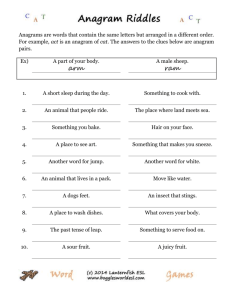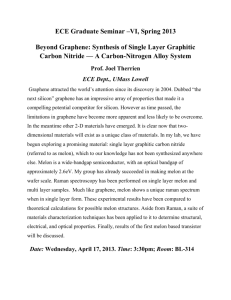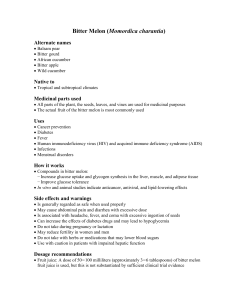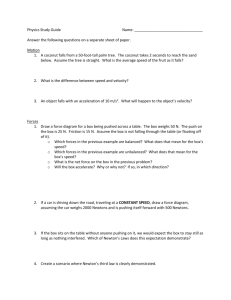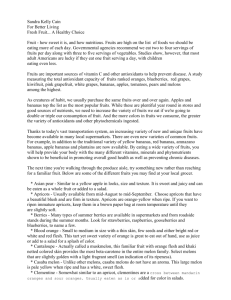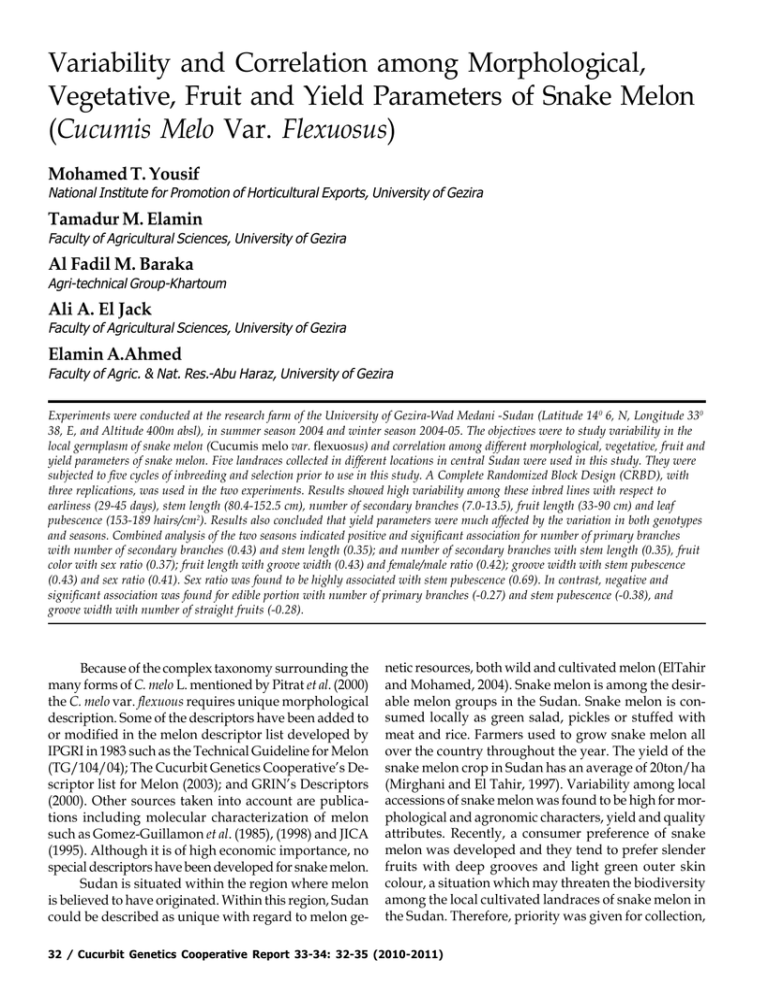
Variability and Correlation among Morphological,
Vegetative, Fruit and Yield Parameters of Snake Melon
(Cucumis Melo Var. Flexuosus)
Mohamed T. Yousif
National Institute for Promotion of Horticultural Exports, University of Gezira
Tamadur M. Elamin
Faculty of Agricultural Sciences, University of Gezira
Al Fadil M. Baraka
Agri-technical Group-Khartoum
Ali A. El Jack
Faculty of Agricultural Sciences, University of Gezira
Elamin A.Ahmed
Faculty of Agric. & Nat. Res.-Abu Haraz, University of Gezira
Experiments were conducted at the research farm of the University of Gezira-Wad Medani -Sudan (Latitude 140 6, N, Longitude 330
38, E, and Altitude 400m absl), in summer season 2004 and winter season 2004-05. The objectives were to study variability in the
local germplasm of snake melon (Cucumis melo var. flexuosus) and correlation among different morphological, vegetative, fruit and
yield parameters of snake melon. Five landraces collected in different locations in central Sudan were used in this study. They were
subjected to five cycles of inbreeding and selection prior to use in this study. A Complete Randomized Block Design (CRBD), with
three replications, was used in the two experiments. Results showed high variability among these inbred lines with respect to
earliness (29-45 days), stem length (80.4-152.5 cm), number of secondary branches (7.0-13.5), fruit length (33-90 cm) and leaf
pubescence (153-189 hairs/cm2). Results also concluded that yield parameters were much affected by the variation in both genotypes
and seasons. Combined analysis of the two seasons indicated positive and significant association for number of primary branches
with number of secondary branches (0.43) and stem length (0.35); and number of secondary branches with stem length (0.35), fruit
color with sex ratio (0.37); fruit length with groove width (0.43) and female/male ratio (0.42); groove width with stem pubescence
(0.43) and sex ratio (0.41). Sex ratio was found to be highly associated with stem pubescence (0.69). In contrast, negative and
significant association was found for edible portion with number of primary branches (-0.27) and stem pubescence (-0.38), and
groove width with number of straight fruits (-0.28).
Because of the complex taxonomy surrounding the
many forms of C. melo L. mentioned by Pitrat et al. (2000)
the C. melo var. flexuous requires unique morphological
description. Some of the descriptors have been added to
or modified in the melon descriptor list developed by
IPGRI in 1983 such as the Technical Guideline for Melon
(TG/104/04); The Cucurbit Genetics Cooperative’s Descriptor list for Melon (2003); and GRIN’s Descriptors
(2000). Other sources taken into account are publications including molecular characterization of melon
such as Gomez-Guillamon et al. (1985), (1998) and JICA
(1995). Although it is of high economic importance, no
special descriptors have been developed for snake melon.
Sudan is situated within the region where melon
is believed to have originated. Within this region, Sudan
could be described as unique with regard to melon ge-
netic resources, both wild and cultivated melon (ElTahir
and Mohamed, 2004). Snake melon is among the desirable melon groups in the Sudan. Snake melon is consumed locally as green salad, pickles or stuffed with
meat and rice. Farmers used to grow snake melon all
over the country throughout the year. The yield of the
snake melon crop in Sudan has an average of 20ton/ha
(Mirghani and El Tahir, 1997). Variability among local
accessions of snake melon was found to be high for morphological and agronomic characters, yield and quality
attributes. Recently, a consumer preference of snake
melon was developed and they tend to prefer slender
fruits with deep grooves and light green outer skin
colour, a situation which may threaten the biodiversity
among the local cultivated landraces of snake melon in
the Sudan. Therefore, priority was given for collection,
32 / Cucurbit Genetics Cooperative Report 33-34: 32-35 (2010-2011)
evaluation and conservation of snake melon and its relatives. The main objective of this study was to estimate
variability among collected lines of the cultivated snake
melon and correlations among the morphological, agronomic, fruit and yield parameters.
Materials and Methods
Experiments were conducted at the research farm
of the University of Gezira-Wad Medani -Sudan (Latitude 140 6, N, Longitude 330 38, E and Altitude 400m
absl), summer season 2004 and winter season 2004-05.
The soil is typical of the Central Clay Plain which is
characterized by its heavy cracking clay (clay content
58%). Five inbred lines of cultivated landraces of snake
melons were used in this study. These were Abu-Haraz
which was collected in Gezira state, Silate and Umdum
collected in Khartoum State, Farm collected in Kassala
State, and Kosti collected in the White Nile State; they
were named after the places where they were collected.
Pure and stable inbred lines were obtained from the collected landraces after five cycles of inbreeding and selection prior to this study. A Complete Randomized Block
Design (CRBD) with three replications was used in these
experiments.
The land was disc ploughed, harrowed, and then
divided into small growing units (7 x 2.5 m2). Seeds of
the different lines were sown on 15th May and 15th October 2004. Fifty plants of each inbred line were grown in
each replication. Three tons of old chicken manure was
applied to the soil before the first irrigation and two doses
of urea (46% N) were applied 15 and 45 days after sowing at a rate of 40 kg urea/fed. at each application. The
crop was irrigated at an interval of 5-7 days during the
first month and the irrigation interval was prolonged
gradually up to 10 days at the harvesting stage. Hand
weeding and chemical control of insect pests and fungal diseases were practiced when-ever it was necessary.
Ten plants of each line were randomly taken, tagged
and subjected to morphological and agronomic characterization. For estimation of yield the whole number of
plants and fruits of each line were considered. Parameters measured in this study
Table 1.
included the following:
Character
1- Earliness: The time
elapsed from planting to
Earliness (days)
the emergence of the
Stem length (cm)
first female flower
Number of primary branches
Number of secondary branches
(days).
Number of fruits/vine
2- Sex ratio: Refers to feFruit length (cm)
male/male flowers ratio
Groove width (cm)
Flesh thickness (cm)
of a plant.
Sex ratio (female/male)
2
Leaf pubescence (No of hairs/cm )
Morphological characteristics such as:
3- Leaf pubescence: Determined by counting number of
hairs at the lower surface of the leaf in a disc (1 cm2)
under the microscope.
4-Stem pubescence: Determined by counting number of
hairs at the surface of the stem in a disc (1 cm2) taken
at the middle of the stem under the microscope.
5- Leaf colour: Leaves of the different plants were described as dark green, green and light green.
Vegetative characteristics such as:
6- Stem length measured in (cm.) from the soil surface to
the tip of the main stem.
7- Number of primary branches: Refers to the number of
branches originated from the first node on the main
stem.
8- Number of secondary branches: Refers to the number
of secondary branches which originated from other
nodes rather than the first node of the main stem.
Yield and yield components such as:
9- Fruit length: Determined by measuring the length (cm)
of the dorsal side of the fruit.
10- Number of fruits per vine. Determined at the end of
the season as total number of fruits harvested from
the line divided by the number of plants of the line
Fruit characteristics such as:
11- Fruit colour: It was described using a four categories
scale: green, light green, pale green and whitish with
the aid of a color chart.
12- Number of straight fruits per vine Shape of fruit was
recorded using a three categories scale: straight, semicurved and curved.
13- Number of ribs: Determined by counting the number
of ribs on the outer surface of the fruit.
14- Groove width: measured in cm at the middle of the
fruit.
15- Flesh thickness: Measured in cm at the middle of the
fruit.
Data were analyzed with MSTAT to calculate
ANOVA and correlation coefficients for these traits
(Table 1 & 2).
Range of
variability
29-45
80.4-152.5
2.8-3.5
7.0-13.5
5.8-7.2
33- 90
1.9-2.3
0.6-2.8
0.3-0.5
153-189
Genotype
( A)
0.000
0.001
0.230
0.002
0.030
0.000
0.000
0.000
0.060
0.070
Probability
Season Genotype x season
(S)
(A x S)
0.28
0.050
0.04
0.006
0.35
0.140
0.05
0.213
0.02
0.050
0.2
0.034
0.15
0.013
0.01
0.200
0.002
0.010
0.02
0.045
Cucurbit Genetics Cooperative Report 33-34: 32-35 (2010-2011) / 33
Results
Highly significant differences were found among
the different lines in the two seasons for earliness
(P<0.000), stem length (P= 0.001), number of secondary
branches (P= 0.002), number of fruits per vine (P= 0.03),
fruit length (P< 0.000), groove width (P< 0.000) and flesh
thickness (P< 0.000) as presented in Table 1. The range
of variability was high for earliness (29-45 days), stem
length (80.44-152.5 cm), number of secondary branches
(7.0-13.5), fruit length (33-90 cm), number of fruits per
vine (5.8-7.2), groove width (1.9-2.3 cm) and flesh thickness (0.6-2.8 cm). In contrast, no significant differences
were found among the different lines for number of primary branches, sex ratio and leaf pubescence. Moreover,
differences among seasons were found to be significant
for stem length (P=0.04), number of secondary branches
(P= 0.04), number of fruits per vine (P= 0.02), flesh thickness (P= 0.01), sex ratio (P= 0.002) and leaf pubescence
(P= 0.02). Furthermore, the genotype x season interaction was significant for earliness (P= 0.05), stem length
(P= 0.006), number of fruits per vine (P= 0.05), fruit length
(P= 0.034), groove width (P= 0.01), sex ratio (P= 0.01)
and leaf pubescence (P= 0.045). The color of fruits of the
different lines ranged from light green to green.
Stem pubescence of the different inbred lines ranged
from few to very few hairs. However, the number of
straight fruits was in the range of 20-3, the inbred line
‘Farm’ recorded the highest number of straight fruits
while the inbred line ‘Kosti’ recorded the lowest number of straight fruits
Association among the different parameters in the
summer season, revealed positive and significant correlation of number of primary branches with secondary
branches (0.43) and stem length (0.35); number of sec-
ondary branches with stem length (0.35) and total number of fruits per vine (0.31) these results were in a line
with those obtained for sweet melon by Taha et al. (2003).
For morphological characteristics, groove width was
found to be associated with sex ratio (0.41) and stem
pubescence (0.43); sex ratio with stem pubescence (0.69).
Fruit length was found to be highly associated with
groove width (0.43) and sex ratio (0.42). Fruit color was
found to be highly associated with sex ratio (0.37), the
darker the fruit the higher the number of female flowers.
Discussion
Melon (Cucumis melo L.) is a polymorphic species
especially for fruit characters such as ripening, shape
and flesh color. This variability was used by several
botanists to subdivide melon into different major groups
(Perin et al., 1999). The most recent classification of melon
is that given by Pitrat et al. (2000). Among these groups
snake melon was characterized as monoecious, very long
fruit, light green to dark green skin, white flesh, not sweet
mature fruit and white seed. Results obtained from this
study indicated that phenotypic differences of some characteristics were highly attributed to differences among
the genotypes, these included earliness and yield components. Moreover, yield components were also found
to be affected by differences due to season. The interaction between the genotype and the season also affected
variability in some characteristics such as earliness, sex
ratio, stem length, number of fruit per vine, fruit length,
groove width and leaf pubescence. These results indicated that both genotype and environmental differences
affected snake melon yield and quality and therefore
selected lines grown under favorable growing conditions
will resulted in high yield and good quality
Some morphological
Table 2.
characteristics such as
stem pubescence, leaf puX1
X2
X3
X4
X5
X6
X7
X8
X9
X10
X11
X12
X13
X1
.10
.13
.19
-.11
-.10
-.20
-.27* -.051
.23
-.38*
.07
-.01
bescence were included in
this study and they were
X2
-.27*
-.18
-.087 -.021 .37**
-.11
.01
.18
-.29*
.83
-.34*
X3
.43** .03
.084 .42**
.18
.17
.27*
.34*
.07
.07
found to be associated with
X4
.28*
.11
.41**
.15
.09
.31*
.43**
-.28* .13
insect resistance in melon,
X5
-.03
.15
.31*
.04
.29*
.12
-.29* .04
as mentioned before by
X6
.08
-.03
.08
.04
.17
.072 .09
X7
.18
.24
-.16
.69**
-.12
.16
IPGRI (2003). Moreover, the
X8
.34**
.35** .15
-.27* .25
ratio of female/male flowX9
.35** .21
-.05
.31*
X10
.166
-.03
.14
ers is crucial as it affects
X11
-.14
.08
pollination especially in
X12
-.24
monoecious plants such as
X13
snake melon. Furthermore,
* Correlation is significant at the 0.05 level.
** Correlation is significant at the 0.01 level.
the natural pollination of
A, Cannot be computed because one of the variables is constant.
the different crops in the irX! = Edible portion
X6= Leaf pubescence
X10= Stem length
X2= Fruit color
X7= Sex
ratio (female/male)X11 = stem pubescence
rigated sectors in the Sudan
X3= Fruit length
X8=Primary branches
X12= Straightness
(number of straight fruits per vine)
X4= Groove width
X9= Secondary branches
X13= Total number of fruits per plant
is threatened by the appliX5= Fruit color
34 / Cucurbit Genetics Cooperative Report 33-34: 32-35 (2010-2011)
cation of insecticides. Therefore, breeding hermaphroditic snake melon to enhance pollination was proposed
to have good chance for successful and complete pollination which in turn results in a high yield with quality
fruits. On the other hand, correlations among fruit length,
groove width and straight length can be discussed with
the linkage of number of straight fruits per plant with
sex type. These associations indicated that hermaphroditic flowers could produce short fruits with broad
grooves whereas total number of fruits per vine increase
even in the absence of pollinators.
A study of correlation among the vegetative and
fruit characteristics in snake melon is almost lacking.
The findings of this study revealed association of number primary branches with both stem length and number of secondary branches; fruit length with stem length;
groove width with stem length; stem pubescence with
both groove width and number of female to male flowers
ratio; and fruit thickness with fruit length and fruit color
with stem pubescence that can be used in selection breeding of snake melon. Nevertheless, some efforts were exerted to identify this association in sweet melon (Cucumis
melo var reticulatus), closely related to snake melon by
Perin et al. (1999) and Taha et al. (2003). The latter showed
positive and significant association in sweet melon between number of fruits per vine with number of primary
branches, number of primary branches with number of
secondary branches. These findings were similar to those
found for snake melon in this study. Results of correlation among the different growth and yield parameters
in snake melon were similar to those found in muskmelon. They also reported strong positive correlation of
netting with total soluble solids and flavor. This might
explain why snake melon fruits are not sweet and with
flat flavor as they are lacking the netting callus on the
outer fruit surface. On the other hand, similarity in association among the different characters between sweet
and snake melon could indicates also having the same
evolution, hybridization and morphological similarity
among the different botanical varieties of the species
Cucumis melo L.
References
El Tahir Ibrahim Mohamed and Mohamed Taha Yousif. 2004.
Indigenous melons (Cucumis melo L.) in Sudan: a Review of
their genetic resources and prospects for use as sources of
disease and insect resistance. Plant Genetic Resources Newsletter No. 138: 36-42.
Gomez-Guillamon, M.L.; Abadia, J.; Cortes, C. and Nuez, F. 1985.
Characterization of melon cultivars. CGC Rept. 8:39-40.
GRIN. 2000. Germplasm Resources Information Network. http:/
www. Ars-grin.gov/npgs/aboutgrin.html.
IPGRI. 2003. Descriptor list for melon (Cucumis melo L.). International Plant Genetic Resources Institute, Italy. ISBN 929043-597-7. URL: http:/www.ipgri.cgiar.org.
JICA. 1995. Cultivation of melon plant genetic resources in:
Cultivation and Evaluation of Vegetable Plant Genetic Resources. Technical assistance for genetic resources projects.
Ref No. 8 March 1995.
Mirghani, K.A. & El Tahir, I.M., 1997. Indigenous vegetables of
Sudan: production, utilization and conservation. In:
Guarino, L. (Editor). Traditional African vegetables. Proceedings of the IPGRI international workshop on genetic
resources of traditional vegetables in Africa: conservation
and use, 29–31 August 1995, ICRAF, Nairobi, Kenya. Promoting the conservation and use of underutilized and neglected crops 16. pp. 117–121.
Perin, C.; Dogimont, C.; Giovinazzo, N.; Besombes, D.; Guitton,
L.; Hagen L.and Pitrat M. (1999). Genetic Control and
Linkages of Some Fruit Characters in Melon. Cucurbit Genetics Cooperative Report 22:16-18.
Pitrat, M.; Hanelt, P. and Hammer, K.. 2000. Some comments on
interspecific classification 0f cultivars of melon. Acta Hort.,
ISHS (510): 29-36.
Taha, M., Omara, K. and A. ElJack. 2003. Correlation among
growth, yield and quality characters in Cucumis melo L. CGC
Rept 26‘:9-11.
Cucurbit Genetics Cooperative Report 33-34: 32-35 (2010-2011) / 35

